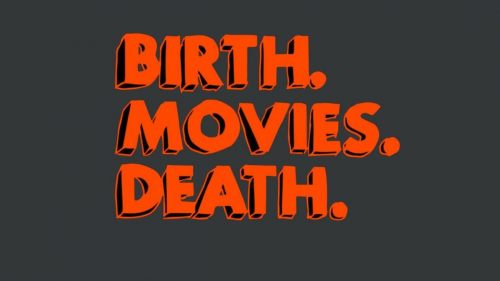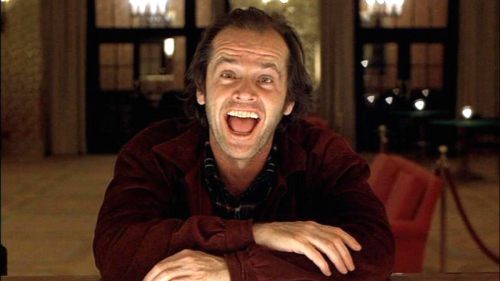BMD Picks: Our Favorite Whodunits
Everybody loves a great potboiler - a mystery that keeps you turning the pages until you reach the end, the killer's identity finally revealed, and the damsel in distress ultimately saved by our broad-chinned hero. The way these yellow-paged drugstore specials translate to screen has resulted in one of the the greatest cinematic subgenres in the history of the medium. A solid whodunit? is arguably one of the most captivating forms of storytelling, whisking audiences away in a series of plot twists and shady characters, usually climaxing with a gotcha! that'll have them talking long after they exit the theater.
In honor of Kenneth Branagh's Murder On the Orient Express, we here at BMD thought it'd be fun for a few of us to get together and talk about our favorite filmed mysteries, just so you have a list of pictures to wash down this latest smoky stunner...

The Lady Vanishes [1938] (d. Alfred Hitchcock, w. Sidney Gilliat & Frank Launder)
Were we to all list our favorite Alfred Hitchcock films, the top halves of those lists would likely look very similar, populated with stone cold classics like Vertigo, Psycho, North by Northwest and Rear Window. Omitting any of those would feel like a sin. Past those entries, these hypothetical lists would diverge wildly as personal taste starts to make itself known. There’s just so much great Hitchcock out there.
My list would feature a fair amount of Hitch's pre-Hollywood spy films, titles like The 39 Steps and Foreign Correspondent. And above them all would sit The Lady Vanishes.
Like Murder on the Orient Express, The Lady Vanishes tells a train-set mystery. In this case, it’s not a murder that must be solved, but a disappearance. A nice, old lady not only goes missing on a moving locomotive, but no one else on the train seems to remember her being there in the first place. Protagonists Gilbert and Iris are no Hercule Poirot, but they manage to uncover a very surprising and unlikely spy plot that I’d rather not spoil, regardless of how old the film is. The film is perfect Hitchcock - wry, violent, a tiny bit gimmicky, and always exciting. - Evan Saathoff

Kiss Kiss Bang Bang [2005] (d. & w. Shane Black)
There's a thrilling, secret energy to Shane Black's Kiss Kiss Bang Bang that creeps upon us in the opening minutes of the film. At first we're charmed by the manically clever voiceover of Robert Downey Jr.'s Harry Lockhart, the freewheeling whimsy of Michelle Monaghan as Harmony Lane, the elegant way in which Val Kilmer's Gay Perry suffers no foolishness.
Because, yes, the performances are perfect, the dialogue a dream. It's a colorful movie, an exciting movie, a movie so filled with jokes that you're apt to miss many of the punchlines the first six or seven times you watch it. But where Kiss Kiss Bang Bang flies highest is in its twisty whodunnit, culminating in a reveal so satisfying that it falls squarely in the league of Agatha Christie and Georges Simenon. This movie's as cheap, neon-drenched and pulpy as the Jonny Gossamer paperbacks at the heart of its story. And it's one of the best detective yarns of the past two decades according to this author - but what do I know? I'm a bear, I suck the heads off fish! - Meredith Borders

The Beast Must Die [1974] (d. Paul Annett, w. Michael Winder)
The Beast Must Die is an idea so incredibly stupid that you sit watching in admiration as it actually, legitimately works. A group of people (which includes Amicus mainstay Peter Cushing, Bond villain Charles Gray and Ganja & Hess’ Marlene Clark) are invited to an island and informed that one of them is a werewolf. In the ensuing 90-odd minutes, backstories are told, suspicions are raised, accusations are thrown, and the group is subjected to a “werewolf test” that John Carpenter probably saw while still at film school. As this Most Dangerous Game/Ten Little Indians mash-up crescendos, the narrative STOPS, and a narrator starts a countdown clock (“the Werewolf Break”!), giving audiences 30 seconds to guess who they think the werewolf is before the truth is revealed. The ‘70s! - Phil Nobile Jr.

My Bloody Valentine [1981] (d. George Mihalka, w. Stephen Miller & John Beaird)
For the most part, there are two types of slasher movies: the ones that establish a boogeyman and spring him loose on the cast - Michael Myers, Madman Marz, Cropsey, etc. Then there are the whodunit types, like Scream and Prom Night, where the masked killer is revealed to be a character we know and perhaps even love. The great thing about My Bloody Valentine is that it posits itself as the former type, by telling the tale of Harry Warden, crazed miner with a hatred of Valentine's Day, and establishing that he can't be found and is likely the one slicing up our "kids" (they're all like 30, but referred to as kids) as they celebrate the big day in the mine where they all work.
There's no reason to think it's NOT Harry, making it a pretty good shock when the killer's gas mask is ripped off to reveal Axel, one of the film's male leads. After a scuffle we get an exposition dump - Axel saw his father killed by the real Harry (who has since passed away in the institution) and was driven crazy by the Valentine's Day celebration. Even on rewatches there aren't a lot of hints that he or anyone else is the actual killer - the Harry Warden legend is sufficiently explained and believable. It's a bit of rug-pulling that I'm honestly shocked I haven't seen aped more often; even the remake firmly established itself as a mystery to be solved (it changed the killer's identity, however). But the fact that it's a unique approach is just one of the many things that sets MBV a notch or two above so many of its peers (with or without its notorious MPAA-excised footage), and I have spent the 20+ years since first seeing it hoping to be just as surprised again by a body count movie. - Brian Collins

Deathtrap [1982] (d. Sidney Lumet, w. Jay Presson Allen)
I went back and forth on whether or not to add Sidney Lumet's Deathtrap to this list. It's not technically a detective story, and no real "sleuthing" takes place over the course of its two-hour run time.
You know what does happen during those two hours, though? A parade of twists and turns, almost all of which land as explosively today as they must have back in '82. I want to tread lightly here for anyone who's not seen the film (if that's you, rent that shit on Amazon Prime tonight and thank me later), but rest assured that things are not as they initially seem, and that some of the material here was very much ahead of its time.
I was going to add a paragraph here breaking down Deathtrap's basic plot, but y'know what? Even that might be doing Lumet's film a disservice. Just go into this one knowing absolutely nothing and I promise you'll be entertained. - Scott Wampler

Blood and Black Lace [1964] (d. Mario Bava, w. Marcello Fondato, Giuseppe Barilla & Mario Bava)
At the peak of his powers, Mario Bava wasn't simply a film director, but an artist gifting the world a series of macabre paintings. His movies move like dreams, submerging us in light, shadow, color and texure, plot running secondary to exploring his rather mournful and erotic moodscapes. In this way, Blood and Black Lace may still stand as his magnum opus; a Technicolor nightmare in which a faceless monster hunts down a series of models for ninety minutes. Like Twitch of the Death Nerve (a/k/a Bay of Blood), this giallo is essentially the proto-slasher, a body count piling in horrible, creative ways as the boogeyman claims trophies amidst a seas of gorgeously arranged and decorated mannequins. This is a motion picture that's easy to get lost in, awash in a popping palette that's wholly intoxicating, even as the plasma runs in a river. One can't help but wonder how Dario Argento must've felt watching Bava's movie for the first time, as his imagination and libido probably exploded simultaneously. - Jacob Knight

Dial M For Murder [1954] (d. Alfred Hitchcock, w. Frederick Knott)
Dial M For Murder isn’t really considered top-tier Hitchcock. It’s remarkably unambitious, taking place almost entirely in one room with a small set of characters, without the single-shot virtuosity of something like Rope. But it’s an incredibly tight and entertaining little murder mystery, adapted (as one might expect) from a stage play, with each and every prop, line of dialogue, and action fitting into its intricate plot.
The story - of a man (Ray Milland) looking to kill his wife (Grace Kelly) for money, failing, and trying to foil the subsequent investigation - isn't as important as the twisty clockwork precision through which the whodunit is executed. The fact that we know exactly who done it puts us on the sidelines cheering the authorities on and wondering whether the (attempted) killer will get away with it, rather than who the killer is. It's ingenious. It’s also funny as fuck, with some delectable moments of irony scattered through the mystery.
I had the good fortune to see a digital restoration of its original 3D version, and predictably, Hitchcock uses depth better than most directors around today. Dial M is no action blockbuster or CGI-laden bonanza - rather, its use of 3D actually makes its stagey setting work for it, drawing the audience into the room as if it were a live performance. A terrific way to see a terrific film. - Andrew Todd



